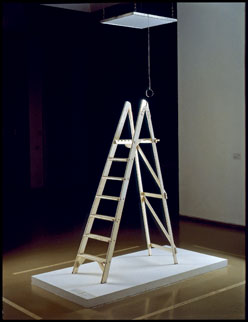I had the good fortune of being in the wonderful city of Copenhagen when Yoko Ono’s retrospective ‘Half-a-Wind-Show’ was showcased at the Louisiana Museum of Modern Art. An avant-garde visual artist, musician and peace activist her work spans a whole range of media from performance, music, installation, sculpture and writing. The retrospective reveals a spirited, experimental, inclusive and all in-compassing approach to art making. There is a mischief in the way her work subverts the snobbery and elitism of the art world with small chimerical statements but there is also a constant reaching out for a larger meaning or enlightenment.
Ono was born in 1933 in Tokyo. She returned to The United States of America in 1952 where she attended the Sarah Lawrence College outside of New York City and it was in the 1960’s she became well known for her conceptual works. The exhibition at the Louisiana Museum of Modern Art was held to represent Ono’s 80th birthday and to celebrate her being a pioneer in the variety of artistic fields to which she has dedicated her life. While walking through the large space of the exhibition, if noted carefully, one would understand the essential element in Ono’s work is the idea behind the work and not necessarily the materials involved. Some of the ideas are established in the form of objects while others remain on the celestial plane. Through out the exhibition, the viewer or audience is given a progressive role by Ono during the process of creation.
Ono was part of the Fluxus movement, which developed its anti-art and anti-commercial aesthetics under the leadership of George Maciunas. The most important pieces of work from this period include performances, texts, and documentation, which influenced this movement. Ono values simplicity and originality over complexity.
The exhibition includes installations both large and spatial, those that can be viewed from a distance and those that encourage viewer participation. One of the exhibition rooms is specifically devoted to Ono’s musical production, represented by music videos, concert recordings, LP/CD covers and concert posters. Ono constantly uses transient or intangible materials to draw the viewer back to a conceptual or philosophical state. She works with glass and Perspex, plays with noise and silence, creates temporary pieces out of touch or shadows.
The Louisiana Museum is known for its pioneering architecture and serene location and Yoko Ono’s pieces engage the space and venue splendidly.







